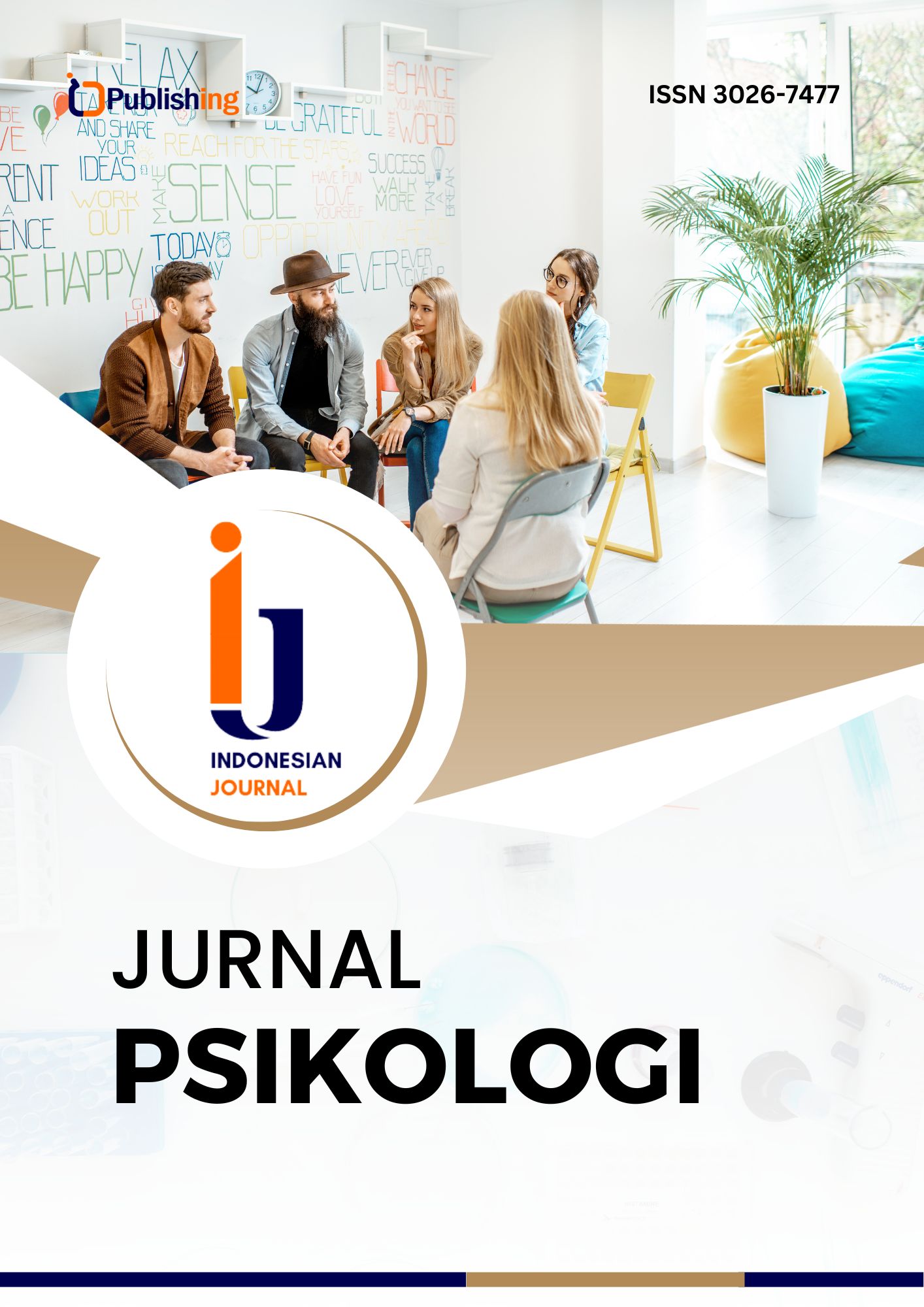Exploring Ideas Through Coffee for Cultivating Creativity
DOI:
https://doi.org/10.47134/pjp.v1i3.2299Keywords:
Neurocognitive Dynamics, Sociopsychological Influences, Environmental Stimuli, Collaborative Innovation, Experiential DesignAbstract
The quest for fresh ideas is a continual process in our dynamic environment, which is driven by innovation. This study conducts a thorough investigation into the complex relationship between coffee culture and the creative process, recognizing the tremendous influence of human cognition and the fundamental human desire for novelty and expression. This qualitative study aims to uncover strategies that enable individuals to tap into their creative reservoirs and cultivate environments conducive to innovation by conducting a nuanced examination of coffee settings and their multifaceted influence on cognitive processes, social dynamics, and environmental cues. This study provides a deeper understanding of how coffee-fueled environments can serve as catalysts for creativity, fostering transformative advancements across various domains and enriching the human experience by combining insights from diverse disciplines and leveraging real-world examples from the coffee industry.
References
Amabile, T. M., & Pratt, M. G. (2016). The dynamic componential model of creativity and innovation in organizations: Making progress, making meaning. Research in organizational behavior, 36, 157-183. DOI: https://doi.org/10.1016/j.riob.2016.10.001
Anderson, E. (2011). The cosmopolitan canopy: Race and civility in everyday life. WW Norton & Company.
Ardell, D. B. (1977). High-level wellness: An alternative to doctors, drugs, and disease. Union Institute and University. DOI: https://doi.org/10.1080/00970050.1977.10618258
Armstrong, T. (2019). Mindfulness in the classroom: Strategies for promoting concentration, compassion, and calm. ASCD.
Ayan, J. (2010). Aha!: 10 ways to free your creative spirit and find your great ideas. Crown Archetype.
Blau, P. (2017). Exchange and power in social life. Routledge. DOI: https://doi.org/10.4324/9780203792643
Carroll, R. (2018). The bullet journal method: Track the past, order the present, design the future. Penguin.
Chadios, K. (2005). The urban coffee shop (Doctoral dissertation, Massachusetts Institute of Technology).
Cochrane, S. (2016). Your Creative Mind: How to Disrupt Your Thinking, Abandon Your Comfort Zone, and Develop Bold New Strategies. Red Wheel/Weiser.
Cohen, D., & Prusak, L. (2002). In good company: How social capital makes organizations work. Harvard Business School. DOI: https://doi.org/10.1145/358974.358979
Collins, A., Brown, J. S., & Newman, S. E. (2018). Cognitive apprenticeship: Teaching the crafts of reading, writing, and mathematics. In Knowing, learning, and instruction (pp. 453-494). Routledge. DOI: https://doi.org/10.4324/9781315044408-14
Csikszentmihalyi, M. (1997). Flow and the psychology of discovery and invention. HarperPerennial, New York, 39, 1-16.
Denning, P. J., & Dunham, R. (2012). The innovator's way: Essential practices for successful innovation. MIT Press.
Fullan, M. (2007). Leading in a culture of change. John Wiley & Sons.
Gelles, D. (2015). Mindful work: How meditation is changing business from the inside out. Houghton Mifflin Harcourt.
Gruber, H. E., Davis, S., & Sternberg, R. J. (1988). The nature of creativity: Contemporary psychological perspectives.
Haktanir, M., & Gullu, E. (2024). Place attachment in coffee shops: a customer perspective study in North Cyprus. Journal of Hospitality and Tourism Insights, 7(1), 312-328. DOI: https://doi.org/10.1108/JHTI-05-2022-0185
Henriksen, D., Richardson, C., & Shack, K. (2020). Mindfulness and creativity: Implications for thinking and learning. Thinking skills and creativity, 37, 100689. DOI: https://doi.org/10.1016/j.tsc.2020.100689
Herrmann, D., & Felfe, J. (2014). Effects of leadership style, creativity technique and personal initiative on employee creativity. British Journal of Management, 25(2), 209-227. DOI: https://doi.org/10.1111/j.1467-8551.2012.00849.x
Highsmith, J. (2009). Agile project management: creating innovative products. Pearson education.
Hislop, D., Bosua, R., & Helms, R. (2018). Knowledge management in organizations: A critical introduction. Oxford university press. DOI: https://doi.org/10.1093/hebz/9780198724018.001.0001
Huxham, C., & Vangen, S. (2013). Managing to collaborate: The theory and practice of collaborative advantage. Routledge. DOI: https://doi.org/10.4324/9780203010167
John-Steiner, V. (1997). Notebooks of the mind: Explorations of thinking. Oxford University Press.
Landry, C. (2019). Distinctiveness and Place: Culture and Creativity. City Policies and the European Urban Agenda, 141-172. DOI: https://doi.org/10.1007/978-3-030-10847-2_5
Liegl, M. (2014). Nomadicity and the care of place—on the aesthetic and affective organization of space in freelance creative work. Computer Supported Cooperative Work (CSCW), 23, 163-183. DOI: https://doi.org/10.1007/s10606-014-9198-x
Lyons, R. (2019). Rhythms of Renewal: Trading Stress and Anxiety for a Life of Peace and Purpose. Zondervan.
Martindale, C., & Dailey, A. (1996). Creativity, primary process cognition and personality. Personality and individual differences, 20(4), 409-414. DOI: https://doi.org/10.1016/0191-8869(95)00202-2
Maspul, K. A. (2023). Brewing Community, Cultivating Mindfulness: The Intersection of Specialty Coffee and Mental Health. Jurnal Pendidikan dan Konseling (JPDK), 5(2), 4536-4551.
Maspul, K. A., & Almalki, F. A. (2023). From Cafés to Collaborative Hubs: Empowering Communities and Transforming the Coffee Value Chain in Buraydah. EKOMA: Jurnal Ekonomi, Manajemen, Akuntansi, 3(1), 179-206. DOI: https://doi.org/10.56799/ekoma.v3i1.2259
McCain, K. E. (2020). Today Your Barista Is: Genre Characteristics in The Coffee Shop Alternate Universe. The Ohio State University.
Mehta, R., & Zhu, R. (2009). Blue or red? Exploring the effect of color on cognitive task performances. Science, 323(5918), 1226-1229. DOI: https://doi.org/10.1126/science.1169144
Mendonça, J. T. (2021). Mysticism of the Present Moment, The: Embodied Spirituality. Paulist Press.
Morris, L., Ma, M., & Wu, P. C. (2014). Agile innovation: The revolutionary approach to accelerate success, inspire engagement, and ignite creativity. John Wiley & Sons.
Nair, J., & Vasudev, B. (2021). Mindfulness training at Google. IUP Journal of Soft Skills, 15(4), 48-53.
Ness, R. B. (2012). Innovation generation: How to produce creative and useful scientific ideas. Oxford University Press.
Oldenburg, R. (1989). The great good place: Cafés, coffee shops, community centers, beauty parlors, general stores, bars, hangouts, and how they get you through the day.
Palmer, M. (2024). The Truth About Pricing: How to Apply Behavioral Economics So Customers Buy. Mango Media Inc..
Pontis, S., Vásquez, C., & Salerno, G. L. (2024). Creative quality matters: Teaching early-career scientists to think in multiple directions. Thinking Skills and Creativity, 51, 101451. DOI: https://doi.org/10.1016/j.tsc.2023.101451
Proshansky, H. M., Ittelson, W. H., & Rivlin, L. G. (Eds.). (1970). Environmental psychology: Man and his physical setting (pp. 21-26). New York: Holt, Rinehart and Winston. DOI: https://doi.org/10.1176/ps.21.6.177
Radjou, N., Prabhu, J., & Ahuja, S. (2012). Jugaad innovation: Think frugal, be flexible, generate breakthrough growth. John Wiley & Sons.
Rainer, T. (1979). The new diary: How to use a journal for self-guidance and expanded creativity. Penguin.
Richardson, J., & Bourdieu, P. (1986). The forms of capital. Handbook of Theory and Research for the Sociology of Education, 241, 258.
Sahlberg, P., & Oldroyd, D. (2010). Pedagogy for economic competitiveness and sustainable development. European Journal of education, 45(2), 280-299. DOI: https://doi.org/10.1111/j.1465-3435.2010.01429.x
Sawyer, K. (2011). The cognitive neuroscience of creativity: A critical review. Creativity research journal, 23(2), 137-154. DOI: https://doi.org/10.1080/10400419.2011.571191
Scardamalia, M., & Bereiter, C. (1991). Higher levels of agency for children in knowledge building: A challenge for the design of new knowledge media. The Journal of the learning sciences, 1(1), 37-68. DOI: https://doi.org/10.1207/s15327809jls0101_3
Silver, D. A., & Clark, T. N. (2016). Scenescapes: How qualities of place shape social life. University of Chicago Press. DOI: https://doi.org/10.7208/chicago/9780226357041.001.0001
Sternberg, R. J., & Zhang, L. F. (Eds.). (2014). Perspectives on thinking, learning, and cognitive styles. Routledge. DOI: https://doi.org/10.4324/9781410605986
Sulistyawati, D., Santosa, I., Wahjudi, D., & Junaidy, D. W. (2024). Millennial experience through the utilization of feature technology in coffee shop interior design. Environment and Social Psychology, 9(5). DOI: https://doi.org/10.54517/esp.v9i5.2249
Walther, J. B. (1996). Computer-mediated communication: Impersonal, interpersonal, and hyperpersonal interaction. Communication research, 23(1), 3-43. DOI: https://doi.org/10.1177/009365096023001001
Wasserman, S. (1994). Social network analysis: methods and applications. Cambridge University Press google schola, 2, 131-134. DOI: https://doi.org/10.1017/CBO9780511815478
Williams, J. M. G., Duggan, D. S., Crane, C., & Fennell, M. J. (2006). Mindfulness‐Based cognitive therapy for prevention of recurrence of suicidal behavior. Journal of clinical psychology, 62(2), 201-210. DOI: https://doi.org/10.1002/jclp.20223










